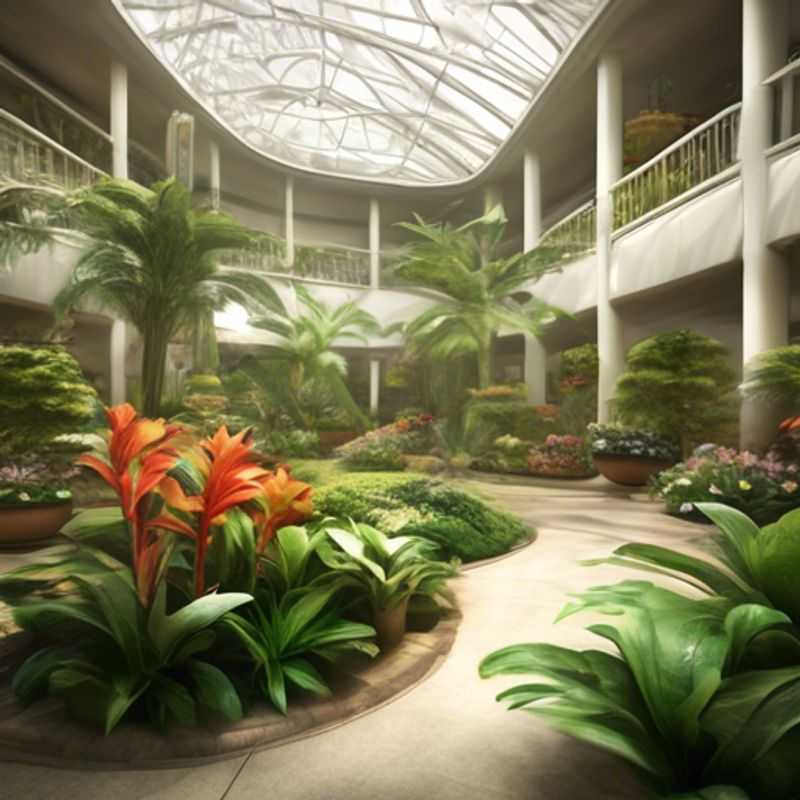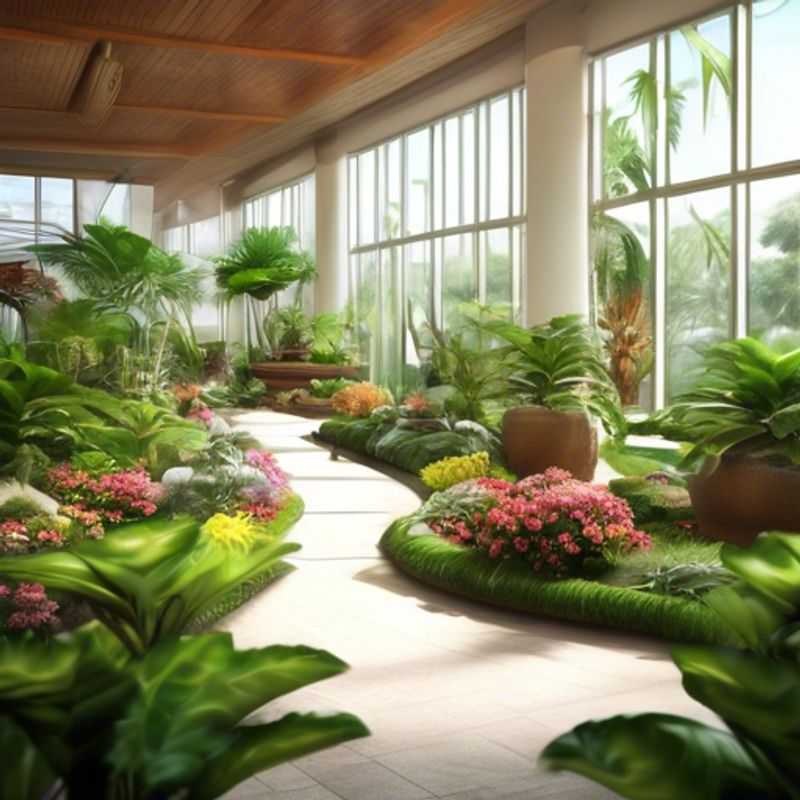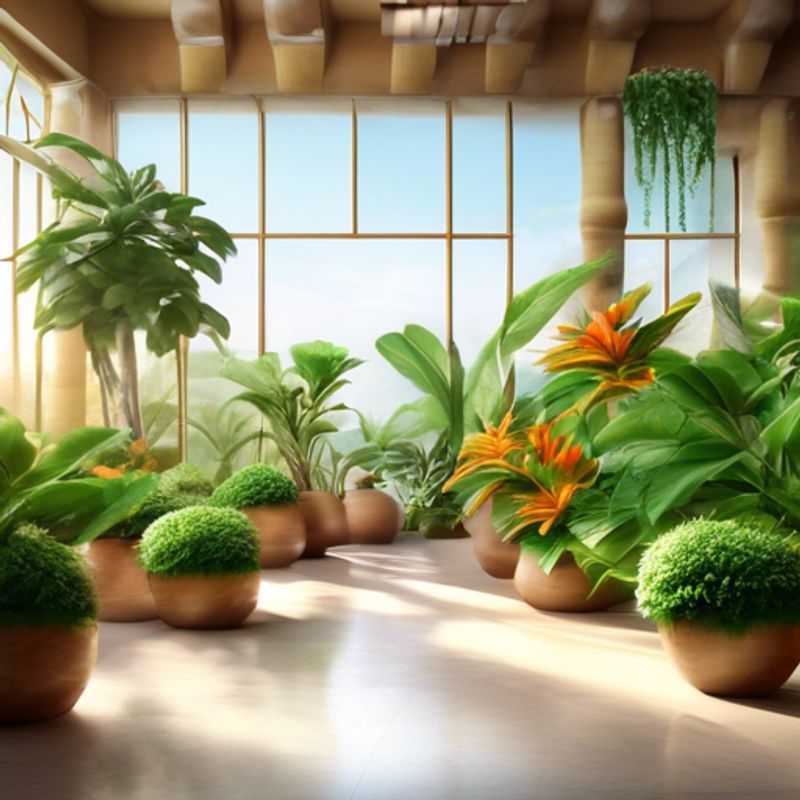Top Things to Know Before Buying the Best Fertilizer for Indoor Plants

Top Things to Know Before Buying Fertilizer for Indoor Plants: Nutrient Needs, Fertilizer Types, Soil and pH, Product Labels, Slow-Release or Organic Options, Application Frequency, Avoiding Over-Fertilization
Choosing the right fertilizer is crucial for healthy, vibrant indoor plants. Here's what you need to know before you buy:
1. Understand the Nutrient Requirements of Your Indoor Plants:

Understanding the Nutrient Requirements of Your Indoor Plants
Understanding your indoor plants' nutritional needs is crucial for their healthy growth. Plants need essential nutrients from the soil to thrive, just like humans need food. These essential nutrients are divided into macronutrients (needed in larger amounts) and micronutrients (needed in smaller amounts).
Macronutrients include nitrogen (N) for healthy foliage, phosphorus (P) for strong roots and flower development, and potassium (K) for disease resistance and overall plant vigor. Micronutrients include iron (Fe), manganese (Mn), zinc (Zn), copper (Cu), boron (B), and molybdenum (Mo) and are important for various metabolic processes within the plant.
The best way to provide your plants with the right nutrients is to use a balanced fertilizer specifically formulated for indoor plants. These fertilizers typically contain a blend of macronutrients in the right proportions. You can also use organic fertilizers like compost or worm castings, which provide a slow release of nutrients and improve soil structure. Always follow the instructions on the fertilizer packaging for proper application rates and timing.
Remember that over-fertilizing can be as harmful as under-fertilizing. Signs of over-fertilization include burnt leaf tips, stunted growth, and salt buildup on the soil surface. If you suspect over-fertilization, flush the soil with water to remove excess salts.
In addition to fertilizer, providing your plants with adequate sunlight and watering are crucial for optimal nutrient absorption. Indoor plants typically need bright, indirect light and should be watered when the top inch of soil feels dry.

Choosing the Right Fertilizer: A Guide to Different Types
Choosing the right fertilizer is crucial for healthy plant growth. There are many different types of fertilizers, each with its own advantages and disadvantages. Knowing what type of fertilizer is best for your plants can help you save money and improve your garden's success.
Types of Fertilizers:
1. Nitrogen (N): Essential for plant growth, especially for leafy greens. It helps with cell division and overall plant vigor.
2. Phosphorus (P): Important for root development, flowering, and fruit production. It is crucial for plant energy production and helps with healthy root systems.
3. Potassium (K): Plays a vital role in water regulation and disease resistance. It strengthens stems and leaves, making plants more resistant to stresses.
4. Organic Fertilizers: Derived from natural sources, such as compost, manure, and bone meal. They release nutrients slowly, improving soil health and structure.
5. Synthetic Fertilizers: Manufactured from chemical compounds, providing readily available nutrients. They are quick-acting but may deplete soil health if not used appropriately.
Choosing the Right Fertilizer:
1. Soil Testing: Get your soil tested to determine nutrient deficiencies, which will guide fertilizer selection.
2. Plant Needs: Consider the specific nutrient requirements of your plants. Leafy greens need more nitrogen, while flowering plants need more phosphorus.
3. Application Time: Fertilizers can be applied during planting, as a side dressing, or as a top dressing. The timing depends on the type of fertilizer and the plant's growth stage.
4. Environmental Impact: Consider the environmental impact of your fertilizer choices. Organic fertilizers are generally considered more sustainable.
Key Considerations:
1. Price: Synthetic fertilizers are typically more affordable than organic fertilizers.
2. Availability: Both organic and synthetic fertilizers are widely available at garden centers and online retailers.
3. Ease of Use: Granular fertilizers are easy to apply, while liquid fertilizers require more careful handling.
4. Sustainability: Organic fertilizers support healthy soil ecosystems and reduce environmental impact.
5. Long-Term Benefits: Organic fertilizers improve soil structure and fertility over time.

Soil Type and pH: The Foundation for Healthy Plants
When selecting a potting mix, understanding the soil type and pH level is crucial for optimal plant growth. Different plants thrive in various soil conditions, and the potting mix should provide the right environment for their roots.
Soil type refers to the composition of the mix, whether it's primarily composed of peat moss, coco coir, or a blend of different materials. Each type has varying water retention and drainage properties. pH level refers to the acidity or alkalinity of the soil, measured on a scale of 0 to 14. Most plants prefer a slightly acidic pH between 6.0 and 7.0. However, certain plants like azaleas and blueberries require a more acidic environment.
You can find information on the specific soil type and pH preferences for your plants online or on plant tags. Choose a potting mix that closely aligns with these requirements for optimal growth. You may also consider using a soil pH testing kit to assess your existing mix or to adjust the pH levels of your potting mix.

Read the Label, Save Money: Understanding Product Application Rates
Always read the product label carefully before using any product. The label contains crucial information regarding the product's intended use, application rates, safety precautions, and potential risks. Following the recommended application rates is vital for achieving the desired results and preventing harm to yourself, the environment, and the target organism. Using too much product can lead to adverse effects and waste, while using too little may be ineffective.
The application rates are typically provided as a measurement of the product per unit area (e.g., grams per square meter) or per volume of water (e.g., milliliters per liter). It's crucial to understand these measurements and apply the product according to the instructions. Pay close attention to the units of measurement and ensure you are using the correct amount.
Following the application rates helps ensure that you are using the product effectively and efficiently. Applying too much product can lead to over-application, which can be harmful to the environment and potentially create resistance in the target organism. Conversely, using too little product may not achieve the desired outcome. By following the application rates, you contribute to sustainable practices and protect the environment.

Sustainable Gardening: The Benefits of Slow-Release and Organic Fertilizers
Long-term nourishment for your plants means investing in slow-release or organic fertilizers. These fertilizers break down gradually, releasing nutrients over an extended period. This gentle release minimizes nutrient runoff, making them environmentally friendly and efficient.
Slow-release fertilizers are typically granular or coated with a material that controls the release rate. They're ideal for busy gardeners as they require less frequent applications. Organic fertilizers, on the other hand, are derived from natural sources like compost, manure, or bone meal. They improve soil structure and microbial activity, promoting long-term fertility.
While organic fertilizers might need time to decompose, they provide valuable nutrients and enhance soil health. When choosing, consider your plant's specific needs and the type of soil you have.

Fertilizer Timing: Getting the Most Out of Your Nutrients
Be mindful of the frequency and timing of fertilizer application. Over-fertilizing can harm your plants and the environment. It's best to apply fertilizer only when needed, as determined by soil testing. Timing is also important, as different plants have different nutrient needs at different stages of growth. For example, nitrogen-rich fertilizers are best applied during the active growing season, while phosphorus and potassium are more important for root development.
You can find more detailed information about the specific nutrient requirements of your plants online and at your local gardening center. Check with your local agricultural extension service for recommendations specific to your region and soil type.
You can save money and minimize environmental impact by applying fertilizer strategically. Using slow-release fertilizers, which break down gradually over time, can reduce the need for frequent applications. Composting and using organic matter in your garden can also provide nutrients to your plants and improve soil health.

Avoid Over-Fertilizing: Protecting Your Plants From Too Much of a Good Thing
Over-fertilizing is a common mistake that can seriously harm or even kill your plants. It is crucial to understand that too much fertilizer can lead to nutrient burn, which manifests as yellowing leaves, stunted growth, and root damage. To avoid this, always follow the recommended dosage on the fertilizer packaging and consider the specific needs of your plants.
Timing is also essential; fertilizing during the growing season is generally more effective than doing so in dormancy. If you're unsure, conduct a soil test to determine existing nutrient levels and adjust your fertilization plan accordingly. Additionally, be cautious with slow-release fertilizers, as they can accumulate in the soil over time.
When estimating your fertilization plan, consider the cost of soil testing and the type of fertilizer you choose, as some premium options can be more expensive. Always factor in the potential need for amendments if you notice signs of over-fertilization, which may include flushing the soil with water to dilute excess nutrients.
In summary, proper application and timing are critical to successful fertilization. By educating yourself and adhering to guidelines, you can keep your plants healthy and thriving without the risk of over-fertilization.
